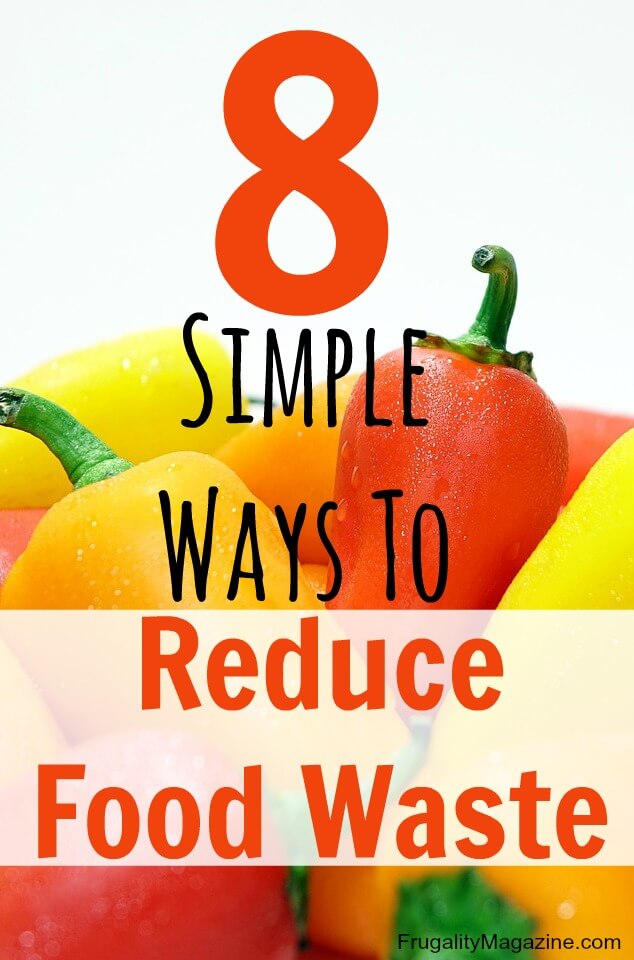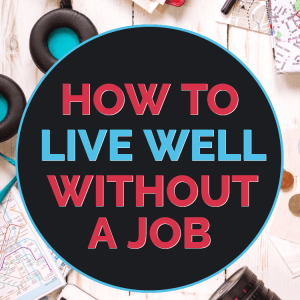Contents
Did you know that roughly a third of all the food we buy ends up in the bin? For the frugal-minded among us, let alone those who care about the environment, that seems like a massive waste.
By learning how to reduce the food waste from your own home you’ll not only manage to significantly reduce your overall grocery budget but you’ll also avoid wasting precious resources on food miles, carbon emmissions and more only to throw the end product in the trash.
Luckily my partner loathes waste and so over the last few years we’ve experimented with one concept after another. Now we barely throw a thing away and today I’d like to tell you the most effective strategies we’ve found to accomplish this…
Make A Meal Plan
It’s too easy to go to the supermarket and stock up on whatever your heart desires or whatever is on special offer that week. But unfortunately this can often lead to either buying higher volumes of fresh food than you’ll use, or ending up with some “odds and ends” that don’t really work with your regular meals so end up sitting there going rotten.
Creating a weekly meal planner can be a great way to avoid this. By pre-planning your meals and buying only the fresh ingredients you need for these meals you’ll avoid the “odds and ends” problem and ensure everything you buy gets used up in a short space of time.
Create A Food List
Once every month or so, we go through our food cupboards and check the “use by” dates on any jars, cans, packets and so on. We do this to ensure that nothing gets “missed” in a busy daily lives and if necessary we factor this into next weeks meal plan.
Another useful strategy that we’ve employed as an extension to this idea is to create a “short dated” cupboard into which we put anything going out of date in the next month. Before making our meal planner – and before cooking anything ad hoc – we start by referring to this cupboard to see what we can use up. Doing this ensures you never have that nasty epxerience of finding something weeks or months out-of-date in your cupboard.
Use A Calendar
Placing a wall planner or calendar in your kitchen can be a great way to maintain control of your refridgerator. With all the various fruits and vegetables, not to mention milk, cream, cheese and so on your fridge is one of the most likely sources of short-dated products and hence food waste.
When we shop, we simply add the “use by” dates of our perishable goods to a calendar. As we use up our groceries the products are crossed off the list and so we can see in a moment what needs using up soon – and in what order.
Learn To Store Food Properly
Bananas shouldn’t be stored in the fridge. Lettuce and scallions last longer left in a glass of water rather than your salad crisper. Root vegetables can be stored in an unheated shed or garage for months. And so on. Learn how to properly store your food to extend it’s usable life and reduce the pressure on you to use it before it goes off.
Buy Canned, Frozen Or Dried
Perishable goods are the greatest risk to your budget so consider buying canned or frozen alternatives. They usually offer just as much nutrition but have a far longer shelf life so are easier to handle.
Moreso, remember that the freezer can be your friend when it comes to products like meat. Rather than letting it go out of date or forcing yourself to cook it when you don’t have time, instead simply throw it in the freezer before the use-by date. Upon thawing, you’ll have 24 hours to use it.
As meat is so expensive to buy, a very frugal tip is to learn when your local supermarket does it’s reductions, visit at that time to stock up on short-dated and cut-price meat and then pop it in your freezer for future use.
Grow Your Own
When you grow your own food you have greater control over when you harvest it and how much you pick. Many salads, for example, can be picked as and when you need it. A few tomato plants will provide fruit for weeks on end. Cabbages and other brassicas can be picked over a long season. Sweet corn straight off the plant tastes amazing. In this way you can select only the ingredients that you need.
Learn How To Preserve Food
Not all home-grown food can be picked at your leisure. Strawberries and other soft fruit, sweetcorn and some others need to be picked at specific times often leading to “gluts” of certain foods. Even the supermarkets will normally have special offers on these products at harvest time to move as much inventory as possible.
So whether you grow your own or buy your fruit and vegetables from a retailer, it’s a good idea to learn how to preserve food. Whether that’s pickling, canning, or drying, learning how to preserve food will let you take advantage of seasonal changes to food availability and pricing, and spread out these savings over the forthcoming months.
Use Leftovers
One final tip worth mentioning is to learn how to cook – and to also learn how to use the less popular parts of food. For example did you know that you can eat the leaves of carrots and beetroot in a salad? They’re delicious!
So one final way to save money on your grocery bill and throw less food away is to simply learn how to use as much of what you buy as possible. Before you throw away those odds and ends, consult the internet or a good cookery book to figure out if and how they can be used.
How have you reduced your food wastage and – as a result – your grocery bill? Please leave your best tips in the comments area below…











I also keep all of the scraps from veggies (except the leaves from celery) and keep freezing them until I have enough to make veggie broth, which I use in place of other broths for soup, etc. Cover veggies with water and simmer until soft, strain & freeze just the broth.
What a great idea Ginna – I hadn’t thought of that one! Thanks for sharing 🙂
Last week I saw a recipe on Pinterest for pickled watermelon rind. Couldn’t resist a chance to rescue all that from ending up as compost! It was so good. If I had put in a pie crust, I’m sure everyone would have thought it was an apple pie. Now I am mourning all the thousands of pounds of rinds that I have wasted in my life because I didn’t know about watermelon rind jam. It’s simple to do.
Haha that’s awesome Rhoda! Thanks for sharing 🙂